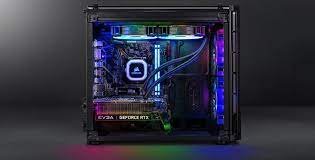
Plug monitors into the motherboard or GPU. If you plug it into an uncharged battery, then the charge will go straight into that battery and not be wasted on powering a monitor. For example, if your laptop is plugged in but has no power left for its battery, it's best to use the power from your wall outlet instead of using up more power from your laptop's charger by trying to charge both at once. The same principle applies with motherboards and GPUs as well - they don't need a monitor plugged in all the time!
Plug Monitor into Motherboard or GPU using an extender cable Unplug monitor and place somewhere safe where it won't be wiggled or unplugged by accident, such as your laptop bag or your pocket If you're worried that the motherboard/GPU might lose power, use a surge protector with battery backup to spare yourself from data loss and downtime.
You can find these at any general electronic store such as Best Buy or Radioshack. Plug the monitor into the surge protector with battery backup.https://motherboardinfo.com/plug-monitor-into-motherboard-or-gpu/
Turn off PC and monitor
Connect extender cable (only one end is needed)
Turn on PC and monitor
If the PC works, continue to Step 6; if not, continue to the troubleshooting section below
[b]Windows 8: Press Windows Key + X and select Command Prompt (Admin) or Power User (if you're logged in as a standard user)[b]
Windows 7: Press Windows Key + X and select Command Prompt (Admin)
Enter shutdown /s /t 0
Press enter to confirm shutdown after the message disappears from the command prompt/Power User Menu
Once you've confirmed that both PC and monitor have shut down, you may
unplug the extender cable
Windows 10: Press Windows Key + X and select Shut down (Power Off)
Unplug the PCs power cable
Wait for at least 30 seconds to 1 minute before continuing with step 15, to give enough time for any residual electricity in the monitor's circuitry to dissipate.
Once you've given enough time to dissipate, power on your monitor first by pressing the power button
Next press and hold down the Num Lock key
The last plug in the PC's power cable, allowing your CPU/GPU to turn on before the monitor turns back on Your PC should now be successfully connected to both the motherboard and GPU monitor.